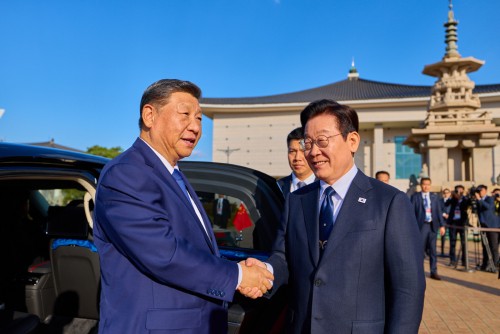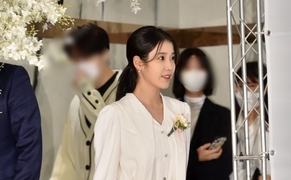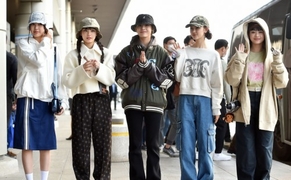 |
| President Lee Jae-myung greets Chinese President Xi Jinping on his arrival at the Gyeongju National Museum for the Korea-China summit on November 1. / Source: Presidential Office |
President Lee Jae-myung and Chinese President Xi Jinping agreed on November 1 to fully restore bilateral relations, signaling the start of a new Korea-China era after years of tension following the 2016 THAAD missile-defense dispute.
The summit, held at the Gyeongju National Museum during Xi’s first state visit to Korea in 11 years, produced tangible results centered on “people’s livelihoods and economic cooperation.” The two leaders oversaw the signing of seven memorandums of understanding (MOUs) and a 70 trillion-won currency-swap deal aimed at stabilizing financial and foreign-exchange markets.
The agreements include MOUs on strengthening service-trade and investment cooperation, jointly tackling cross-border online scams and voice-phishing crimes, advancing the Korea-China Economic Cooperation Plan (2026-2030), and promoting collaboration in the silver industry, start-ups, and agricultural exports.
The two sides also agreed to reactivate high-level dialogue channels to enhance strategic communication on bilateral, regional, and global issues — including the West Sea maritime structure dispute and China’s restrictions on Hanwha Ocean’s subsidiary. Officials described the discussions as “productive and forward-looking.”
President Lee emphasized the importance of strategic coordination “to resume dialogue with North Korea,” while Xi responded that China is “willing to inject more positive energy into regional peace and development.”
National Security Adviser Wi Sung-rak said the summit marked a “stabilizing turn” for Korea-China relations within Seoul’s pragmatic, national-interest-driven diplomacy. He added that a range of security issues — including those related to Korea’s nuclear-powered submarine program — were also discussed.
Most Read
-
1
-
2
-
3
-
4
-
5
-
6
-
7





















